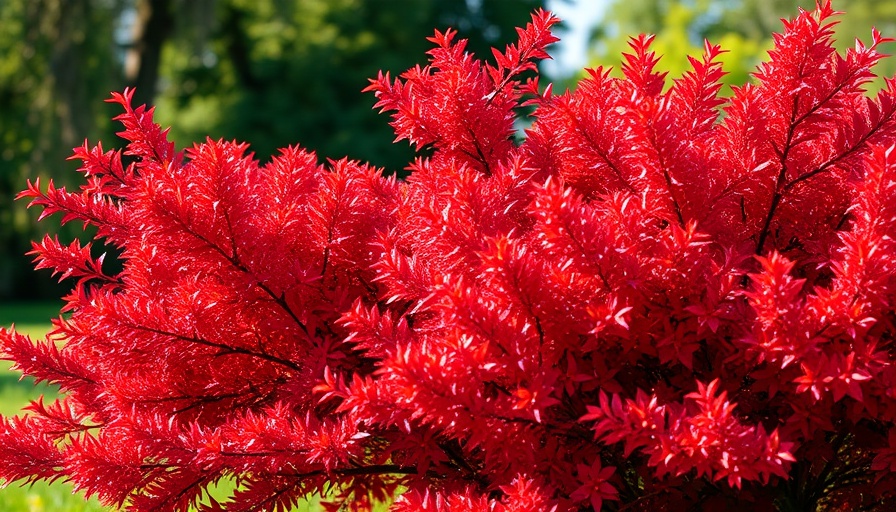
Embrace the Stunning Beauty of Burning Bush
The burning bush, known scientifically as Euonymus alatus, is a distinctive shrub celebrated for its vibrant scarlet foliage in autumn. This ornamental delight, however, carries a dual identity as a potentially invasive species across significant portions of the United States. For those in USDA Hardiness Zones 4 to 8, its striking appearance has made it a popular choice for landscaping. But with great beauty comes the responsibility of understanding its growth requirements and environmental impact.
Understanding the Invasive Nature of Burning Bush
The burning bush thrives and can grow up to 20 feet tall with a spread of about 12 feet, making it ideal for privacy screens and hedge formations. Unfortunately, its prolific seed production can lead to widespread dispersal into natural areas, where it can outcompete native plants. This has led to the species being labeled invasive in states like Massachusetts and New Hampshire, where planting it is prohibited. Recognizing these factors is critical for gardeners who wish to cultivate this plant without risking local ecosystems.
Smart Strategies for Growing Burning Bush
For those who can legally plant E. alatus, proper care will ensure a thriving specimen. Here are essential gardening tips:
- Location: Choose a location with full sun to partial shade. This shrub flourishes best in loose, rich, and well-draining soil. Consider soil pH to be between 6.0 and 7.5 for optimal growth.
- Watering: Ensure consistent moisture, especially during its growing phase. Once established, burning bush is relatively drought-resistant.
- Fertilization: While fertilizing isn't strictly necessary, an organic fertilizer can enhance growth, particularly in poor soils. Regular compost can also enrich the soil and encourage plant health.
How to Identify and Select Cultivars
Burning bush comes in various cultivars. Compact forms are available that limit growth in smaller garden spaces. Selecting a cultivar that fits your landscape will not only maintain the aesthetic appeal but also mitigate the risk of maintaining a large and potentially invasive plant. Regular pruning can also help control its size while promoting healthier growth.
Managing Pests and Diseases
Although burning bush is relatively hardy, its vulnerabilities include aphids, scale, and spider mites. Practicing preventative measures—such as regular inspections and keeping surrounding areas clear of debris—can control pest populations effectively. In terms of diseases, Euonymus alatus may be prone to stem rot and leaf spot. Therefore, maintaining proper watering habits will help prevent such conditions from developing.
The Future of Burning Bush in Your Garden
While the burning bush offers breathtaking aesthetics, its invasive nature demands careful consideration. Gardeners must weigh the benefits of its beauty against the potential ecological consequences. Exploring alternatives such as E. atropurpureus, the native burning bush, can provide similar coloring without the adverse environmental impact.
Conclusion: Making Informed Gardening Choices
As you plan your outdoor space, consider incorporating plants that not only beautify your landscape but also support local ecosystems. Opting for native species and exploring sustainable gardening practices can lead to a healthier garden. If choosing to plant burning bush, commit to responsible care and awareness of its growth habits.
As gardening evolves, it becomes clear that making informed choices is essential. Start cultivating a vibrant and environmentally conscious garden today!
 Add Row
Add Row  Add
Add 




Write A Comment